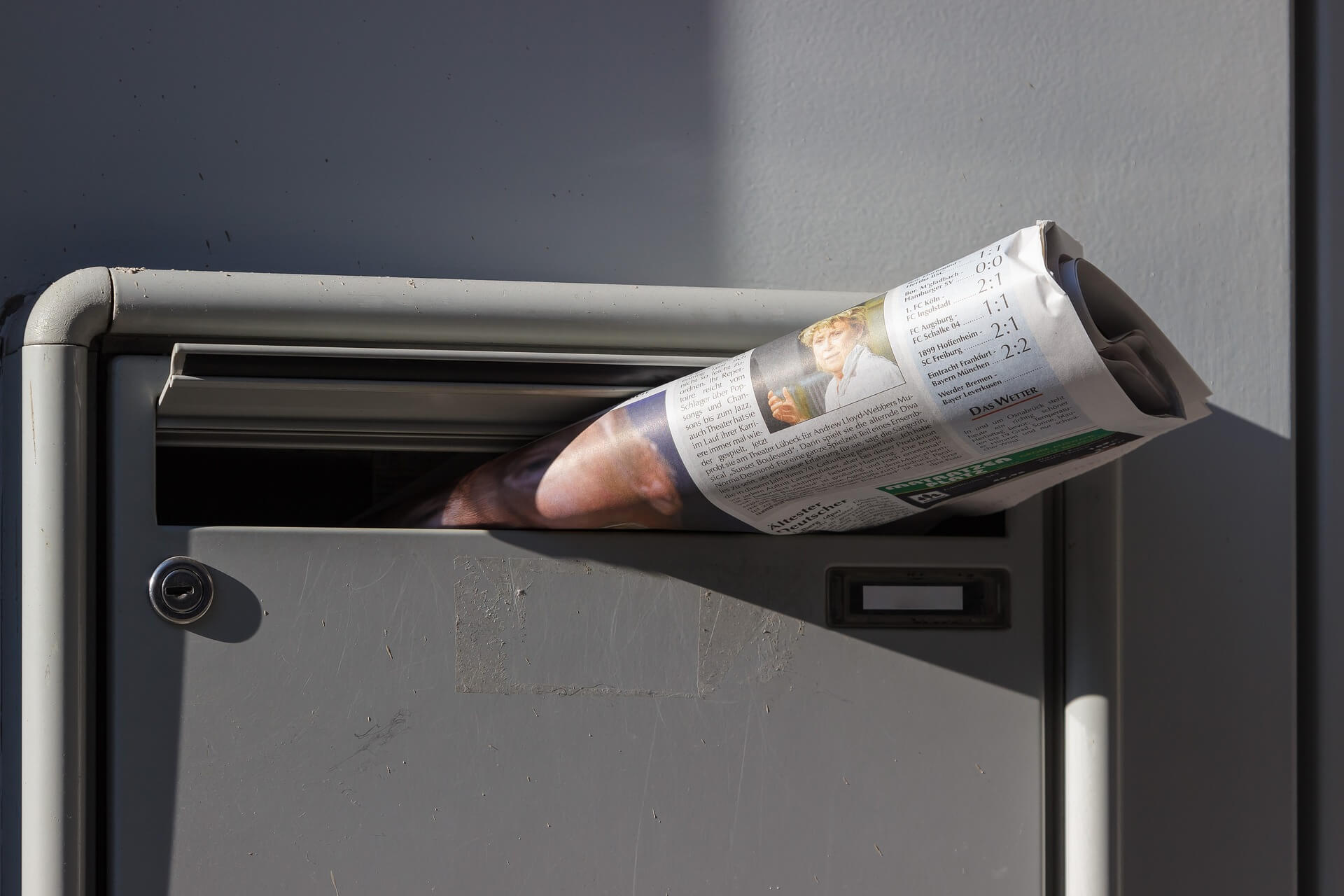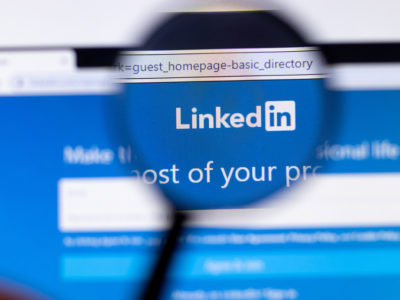Ever heard of a marketing platform that provides $42 for every dollar spent?
Sounds too good to be true, right? Well, it’s not.
According to Oberlo, e-mail marketing has the potential to deliver an ROI ratio of 42:1. Other industry watchdogs and analysts claim even higher returns. For example, in 2018, CampaignMonitor claimed an ROI of 44:1.
Whatever the correct numbers might be, email marketing – not social media – remains the King of the Marketing kingdom. And if you haven’t yet explored this route to build your business and brand, there is no better time than now to start.
Why Create a Newsletter Marketing Strategy?
As a business owner, a well-crafted newsletter marketing strategy can benefit you in four ways:
- Showcase your authority: A value-adding, informative newsletter will allow you to showcase your expertise to your audience, and can become a go-to source of information itself.
- Connect with your customers: With a newsletter, you’ll have more personal and direct contact with your audience than social media posts. If done correctly, it will enable you to build a deeper connection between your readers and yourself, establishing loyalty to your brand.
- Share your story: You can involve your audience in your story by sharing news about milestones and goals reached for your business. You can make them feel part of your story by explaining how your news might be beneficial to them.
- Generate revenue: Newsletters offer you an opportunity to generate revenue by showcasing your services or products. Add special offers, coupons and exclusive, newsletter-related discounts to the mix, and you’re very likely to reap the benefits.
The Three Most Common Types of Newsletters
Whether you’re just starting out, or already have a large, established business, you’ll be able to find a newsletter type that suits your needs.
The Publishing Companion
This style of newsletter is the simplest, with the sole purpose of communication. By pairing a Publishing Companion newsletter up with your content schedule, you can send an email to let the subscriber know that there is new content available.
You can keep it simple by sharing a snippet from a blog post or podcast show notes with links taking your readers to the full content on your website. Going a step further, you can build an even closer relationship with your readers by providing access to this content before promoting it on any other platforms.
Some tools, like MailChimp, can even automate this process for you.
Pictured below is a snippet of a support email from Square Holes, spreading word of a talk between two people on communicating digitally.
The Standard Email Newsletter
The Standard Newsletter is an email newsletter that is released regularly. It will cover new content and, if you want, material from other sites to compliment yours.
A Standard Newsletter is only as good as the effort you put into it. Some of the top Standard Newsletters in the business are crafted by seasoned writers and creatives who invest a lot of time and expertise into their work, and it shows. Just think of The Hustle, with its unique comedic tone, or a multi-hour read like Evergreen Business Fortnightly.
Pictured below is one of the shorter examples of a weekly post from Moz. This one has a nice balance between the writing and graphics.
Generally, this type of newsletter will be made using HTML and have images and fancy formatting. But as with the Publishing Companion, there also are programs and tools that will enable you to craft high-quality newsletters. Some of these tools also have advanced analytical features – providing information about opening rates and reading times – built into them. By making use of this data, you’ll be able to continuously improve your newsletter over time.
Also Read: Why Does Email Marketing Work?
The Personal Email Newsletter
If you already have a strong following (exceeding 500) and would like to forge a stronger bond with your readers, the Personal Email Newsletter is the way to go. It is often used by CEOs, newspaper editors and politicians to increase authority and engagement with their followers. It is written in a very personal and casual style, creating the impression you’re writing directly to your reader.
Writing a Personal Email Newsletter tends to take longer than the aforementioned types, so it’s best left to established businesses with the resources to craft them. We recommend distributing daily, however, weekly could also work if you make it a bit longer.
Want to explore more ways to build authority in your niche and/or explore more avenues to market your business? Check out Call for Content’s range of playbooks for more information.
How to Write Your Newsletter
There are only four steps to making a great newsletter. The hardest part is the subject line. Once you have that down, the rest is easy-going, so let’s get started with the email itself.
Step 1: Pick a Name for the Newsletter
Yup, you need a name, this is the choice of your email address. This one doesn’t have many details. The only significant thing to consider is that you have to make it clear that it’s from you, or your business and that it is a newsletter and not an ad.
In many cases, if you use a personal name, it works better than using your business name. Sometimes you can bring it a step further by building a business persona for the business.
An example could be: Abbey’s Newsstand: <Business Name>
Abbey can be the business persona. She will share information with the readers updating them on events and content. You can even have figures of “Abbey” around the newsletter, bringing focus to certain things such as interesting facts or call to actions.
Step 2: Set the Subject Line
Like any headline, the subject line is the tricky part. There are two crucial parts to a subject line:
- To be unique: The reader won’t even notice the post if the subject line isn’t unique. Make it stand out, so that you can potentially grab their interest. This can be done with unique formatting or unique words to catch attention.
- Grab the reader’s interest: Once you have gotten the reader’s attention, you need to get them to start reading. You can do this by teasing content or asking a difficult question the reader will have to find the answer for. Your subject should address the pain point of your reader directly; this way, they know that the email is related to their interests.
Also, if you haven’t made it clear in the name of the newsletter that this is a newsletter, then you should now. Otherwise, treat it as a standard headline.
You can test various headlines by having two separate emails sent to different groups of people; this is a great way to see the efficiency of your headlines!
Step 3: Write the Newsletter
Now to work on the actual content. If you’re driving traffic to different pieces of content on your website, you really need to tease your readers with strong hooks, encouraging them to click through to the information you’re sharing.
The chance for a reader to follow a link drops rapidly after each link. If you’re writing a Standard or Publishing Companion promoting various pieces of content, you need to have a content hierarchy in your newsletter. In doing so, you’ll provide prominence to your leading content with a strong call to action to click through to the full story. The rest of the call-to-actions are complementary and there if the reader is still interested.
Otherwise, this step is for choosing the content, writing its descriptions, the introduction, and the conclusion.
Step 4: Make it Pretty
This last step is the fun part, time to work with colors and graphics (mainly for the standard, and support emails).
The first thing to remember is the importance of keeping your newsletter mobile-friendly. Litmus.com found that in 2018, 46% of emails were opened on mobile devices. So, make your email mobile-friendly by using short sentences and condensing images to keep data costs low.
Going back to fun colors and images, these will depend heavily on your target market. If you’re doing a standard newsletter, it’s a good idea to keep your newsletter entertaining.
*Expert Tip: It often helps to design a template on a newsletter service and stick to it for the sake of consistency.
Email Marketing
Building a Mailing List
If you already have a list of email contacts for your business, you can get cracking immediately!
If you don’t, there are numerous ways to build your readership. Some good ways have people register for your service and as a part of registering collect the emails. Another way is to have free downloadable content that requires an email to unlock. Some examples of content formats you can play around with are ebooks, checklists, reports and infographics.
Software
As previously mentioned, it is a good idea to have an automated service to distribute your newsletter and gather the metrics you’ll need, such as open rate, click-through rate, bounce rate, and unsubscribe rate. Some of the popular mailing systems include:
- MailChimp – This one we recommend for all-round mailing systems.
- HubSpot – Full suite of marketing automation tools, including email
- ActiveCampaign – Has many features, however it does have a fee
- Autopilot – Powerful automation with built-in mailing campaigns
The Best Way to Learn
The best way to improve your email marketing is to experiment. Produce two copies where you vary certain things and publish them to two different groups of recipients. Monitor the metrics of each to see what went well and implement that into your future newsletters.
Your email metrics will show different strengths and weaknesses. For example, the open rate shows how well your name and subject line work, but do not indicate performance of the newsletter itself. Some metrics to look out for:
| Metric | What does it mean? | Benchmark* | Affected by? |
| Open rate | Indicating whether your reader opened your mail, or not. | 17.8% | Subject line and name |
| Bounce rate | The readers who navigate away after taking a glimpse of your newsletter. | 0.7% | Format, graphics, introduction |
| Click-Through rate | Indicating how many readers clicked through to your website. | 2.6% | Bad hooks and Calls to Action |
| Unsubscribe rate | How many readers you are losing. | 0.1% | Irrelevant content, too many newsletters, bordering on spam |
* Source: Campaign Monitor
Conclusion
That’s pretty much everything you need to know to get started with newsletters, leaving the rest up to you. As long as you have the expertise and know-how, then a newsletter will help build your authority tenfold and contribute to the growth of your business.
If you would like more details on building your authority, there are many, many more, and we go over exactly how to do it in The Authority Marketing Playbook. Read now and build your pathway to authority.





